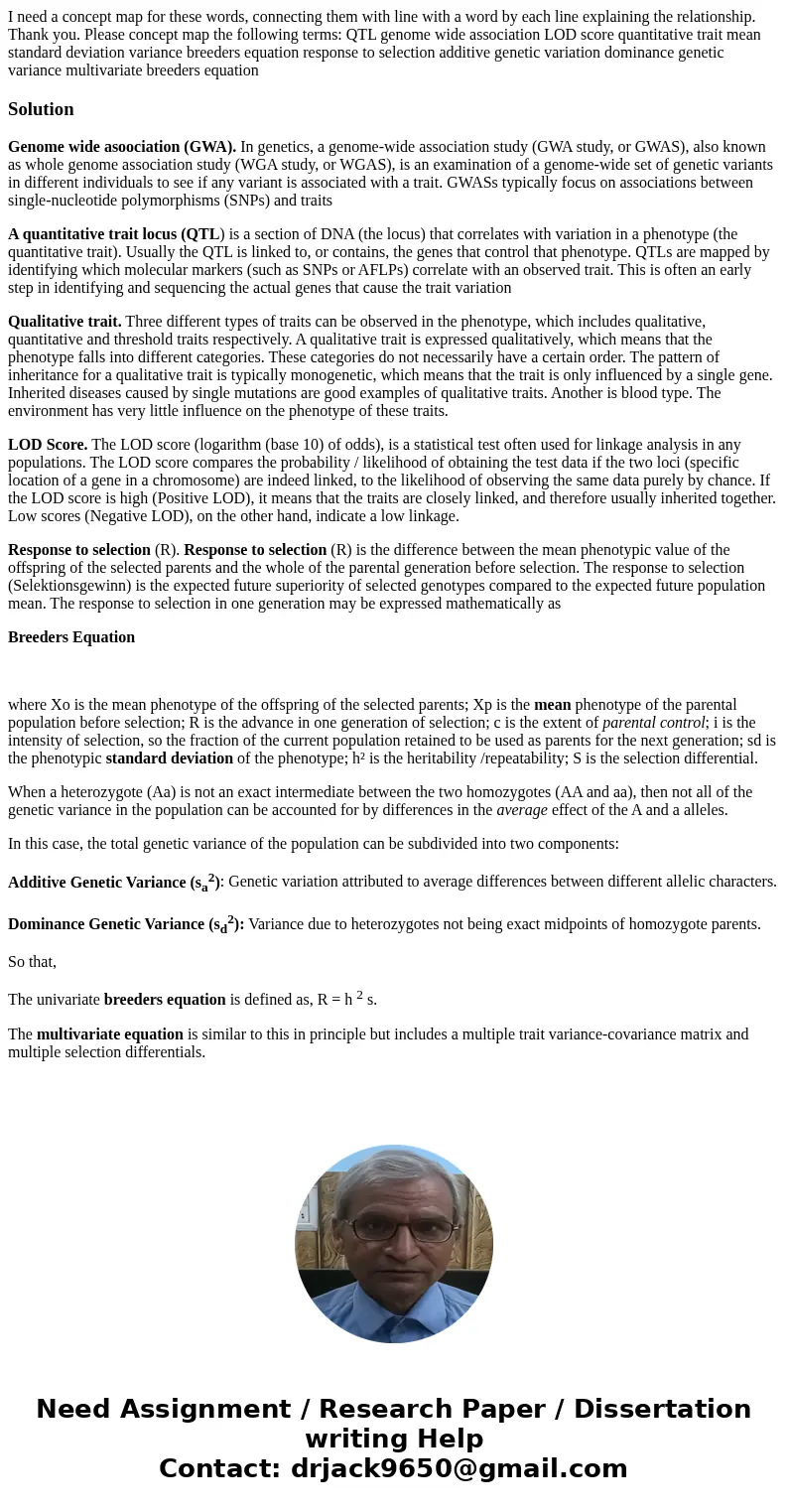I need a concept map for these words connecting them with li
Solution
Genome wide asoociation (GWA). In genetics, a genome-wide association study (GWA study, or GWAS), also known as whole genome association study (WGA study, or WGAS), is an examination of a genome-wide set of genetic variants in different individuals to see if any variant is associated with a trait. GWASs typically focus on associations between single-nucleotide polymorphisms (SNPs) and traits
A quantitative trait locus (QTL) is a section of DNA (the locus) that correlates with variation in a phenotype (the quantitative trait). Usually the QTL is linked to, or contains, the genes that control that phenotype. QTLs are mapped by identifying which molecular markers (such as SNPs or AFLPs) correlate with an observed trait. This is often an early step in identifying and sequencing the actual genes that cause the trait variation
Qualitative trait. Three different types of traits can be observed in the phenotype, which includes qualitative, quantitative and threshold traits respectively. A qualitative trait is expressed qualitatively, which means that the phenotype falls into different categories. These categories do not necessarily have a certain order. The pattern of inheritance for a qualitative trait is typically monogenetic, which means that the trait is only influenced by a single gene. Inherited diseases caused by single mutations are good examples of qualitative traits. Another is blood type. The environment has very little influence on the phenotype of these traits.
LOD Score. The LOD score (logarithm (base 10) of odds), is a statistical test often used for linkage analysis in any populations. The LOD score compares the probability / likelihood of obtaining the test data if the two loci (specific location of a gene in a chromosome) are indeed linked, to the likelihood of observing the same data purely by chance. If the LOD score is high (Positive LOD), it means that the traits are closely linked, and therefore usually inherited together. Low scores (Negative LOD), on the other hand, indicate a low linkage.
Response to selection (R). Response to selection (R) is the difference between the mean phenotypic value of the offspring of the selected parents and the whole of the parental generation before selection. The response to selection (Selektionsgewinn) is the expected future superiority of selected genotypes compared to the expected future population mean. The response to selection in one generation may be expressed mathematically as
Breeders Equation
where Xo is the mean phenotype of the offspring of the selected parents; Xp is the mean phenotype of the parental population before selection; R is the advance in one generation of selection; c is the extent of parental control; i is the intensity of selection, so the fraction of the current population retained to be used as parents for the next generation; sd is the phenotypic standard deviation of the phenotype; h² is the heritability /repeatability; S is the selection differential.
When a heterozygote (Aa) is not an exact intermediate between the two homozygotes (AA and aa), then not all of the genetic variance in the population can be accounted for by differences in the average effect of the A and a alleles.
In this case, the total genetic variance of the population can be subdivided into two components:
Additive Genetic Variance (sa2): Genetic variation attributed to average differences between different allelic characters.
Dominance Genetic Variance (sd2): Variance due to heterozygotes not being exact midpoints of homozygote parents.
So that,
The univariate breeders equation is defined as, R = h 2 s.
The multivariate equation is similar to this in principle but includes a multiple trait variance-covariance matrix and multiple selection differentials.

 Homework Sourse
Homework Sourse